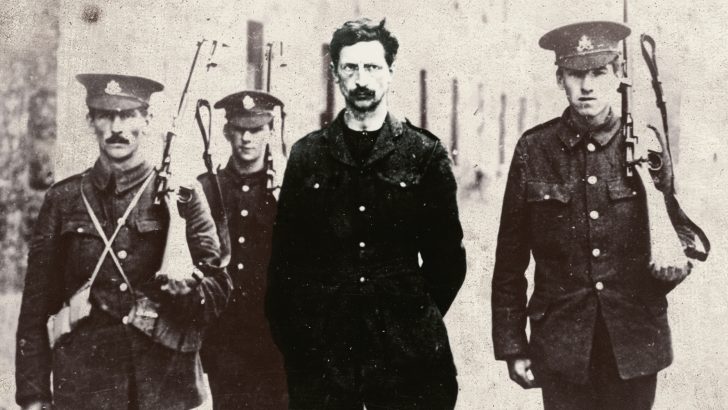After the Rising: Soldiers, lawyers and trials of the Irish Revolution
by Seán Enright
(Merrion Press, €19.99)
J. Anthony Gaughan
In his collection of trials Seán Enright reviews the aftermath of the Easter Rising. All the usual subjects are in the dock, including Eoin MacNeill, Bowen-Colthurst, Sir Roger Casement, Countess Markievicz, Terence McSwiney, those arraigned for the Bloody Sunday assassinations of members of the intelligence service, and Seán Mac Eoin.
There are also accounts of the trials of two priests: one was charged with fundraising for Dáil Éireann, the other with failing to inform the authorities about an intended ambush.
The author describes the steady erosion of the justice system and its eventual collapse throughout 1919, 1920 and 1921. However, he does not mention an incident which was crucial in that progression.
Barracks
This occurred in the RIC barracks in Listowel, Co Kerry, where 15 constables refused to be transferred and to hand their barracks to the military. As news of this spread throughout the RIC and appeared in the press, the pace of members of the force taking early retirement or being dismissed quickened. Eventually by March 1, 1921, 2,570 members had left the force.
Their places were taken by the hastily-recruited Black and Tans. For the most part they were ex-soldiers, veterans of the Great War, and they received little, if any, serious police training.
They adopted the government’s policy of reprisals with enthusiasm and their indiscipline and the outrages for which they were responsible alienated the Irish people and caused them to no longer have any regard for the ‘forces of law and order’ and their administration of justice.
One of the chief merits of this book is a dramatis personae and some delightful, albeit mischievous, pen pictures of the leading figures inside and outside the courthouse during Ireland’s revolutionary period.



